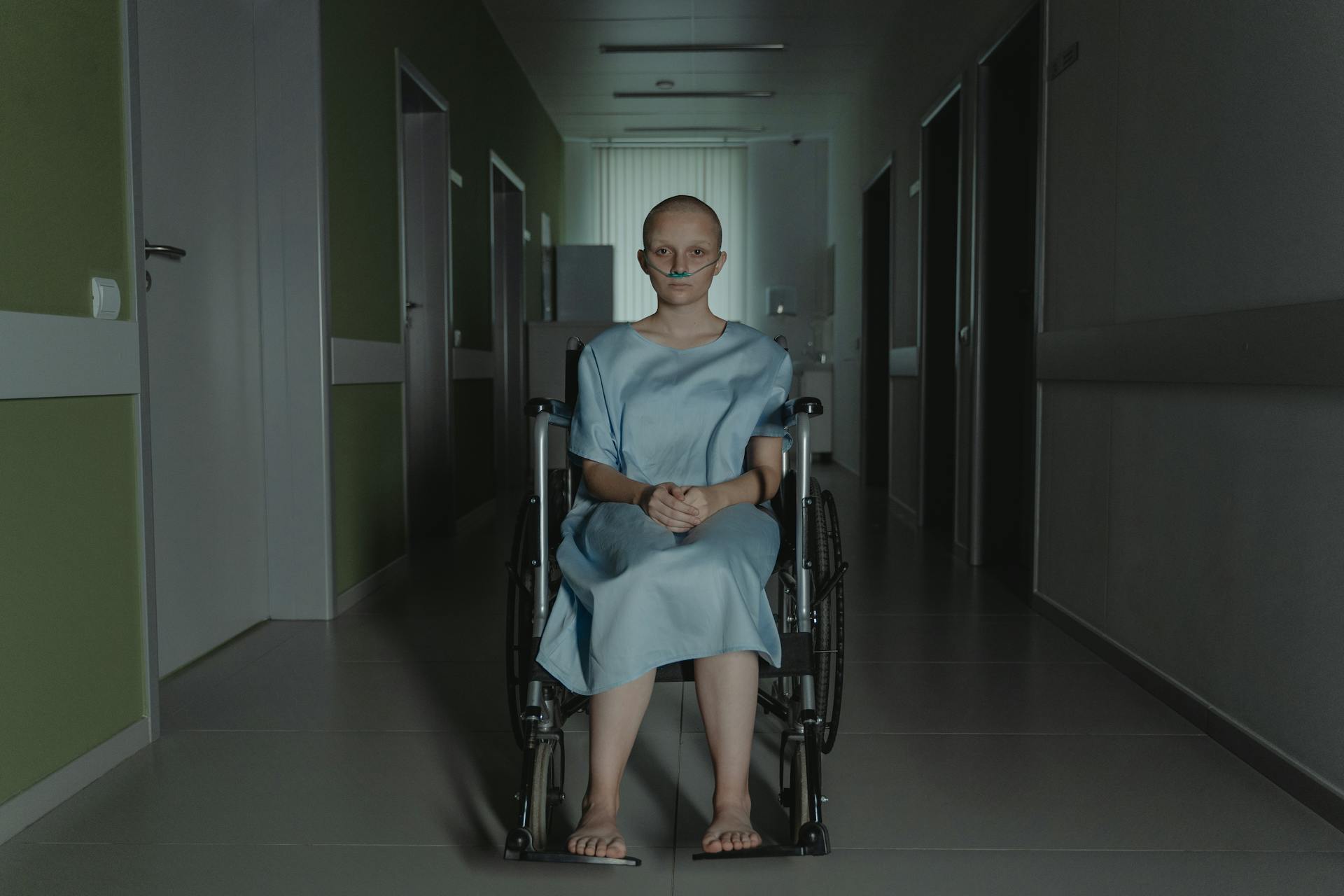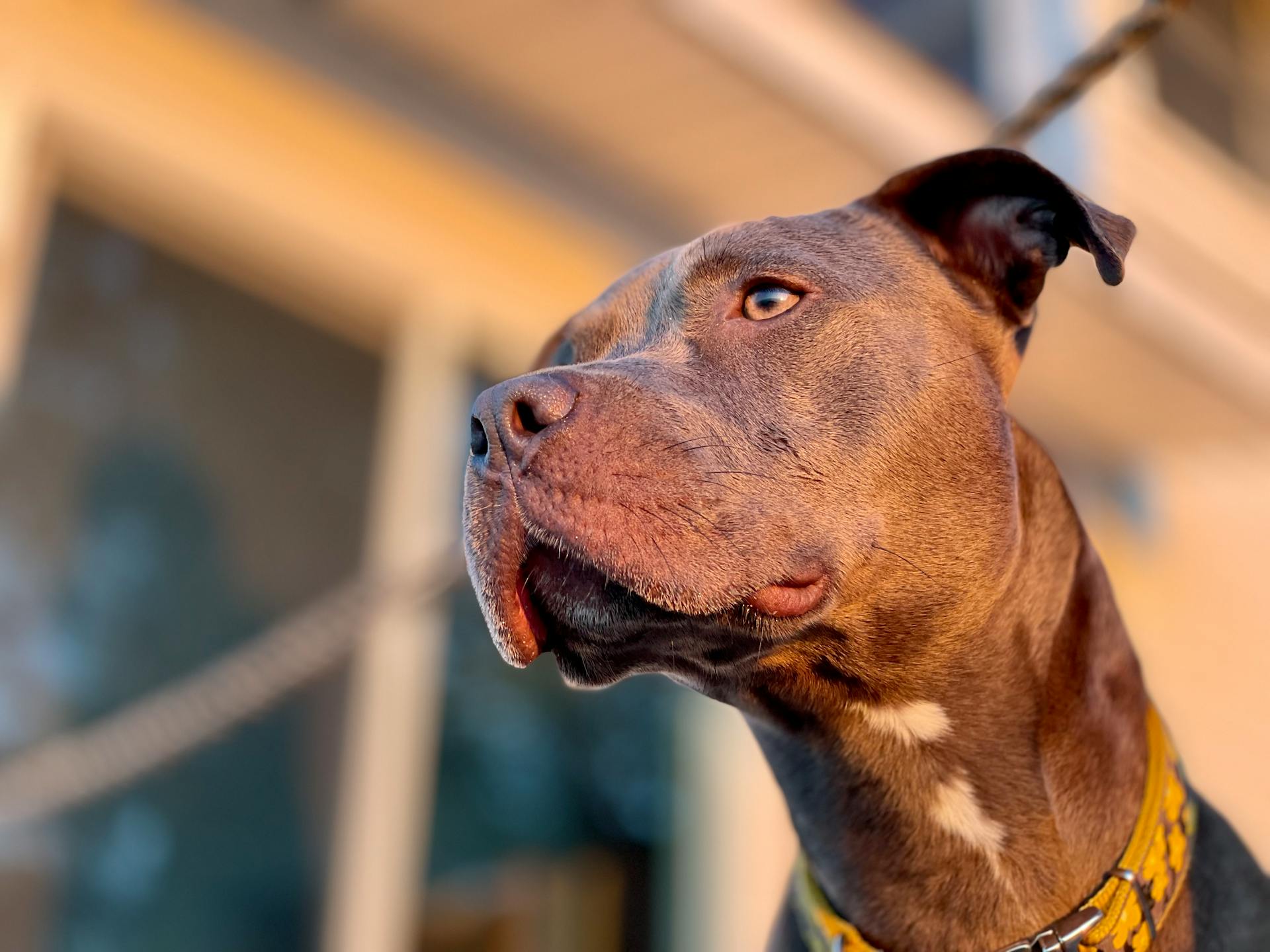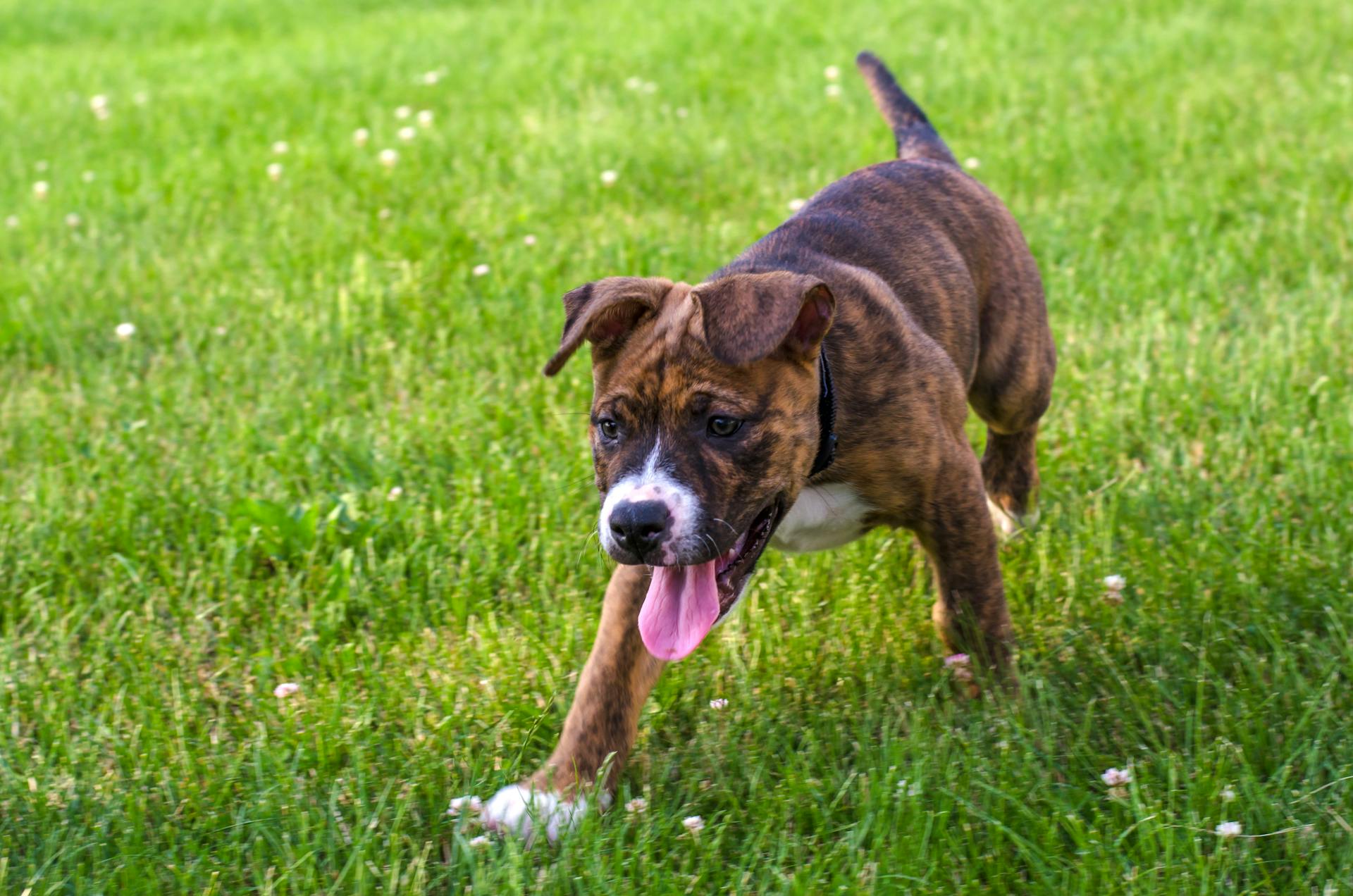
Colour dilution alopecia in Staffordshire Bull Terriers is a serious condition that affects the breed's beautiful coats. It's a genetic disorder that causes hair to fall out in patches, leading to a characteristic "leopard-like" appearance.
Staffordshire Bull Terriers are prone to colour dilution alopecia due to their genetic makeup, with many breeders now working to breed out the condition.
What Is CDA?
Color dilution alopecia, or CDA, is a type of inherited hair loss that affects dogs with dilute fur colors. These colors include blue and fawn, which are common in many breeds.
Dogs with CDA have a recessive gene that causes hair shafts to break off at the base, leading to stunted hair growth. This results in patches of hair loss.
CDA is not directly related to skin inflammation or irritation, but secondary bacterial infections can occur due to blocked hair follicles. This can cause itchy or flaky skin.
Puppies carrying the inherited trait often have normal coats for their first few months, but hair loss begins in late puppyhood or early adulthood.
On a similar theme: Dogs Hair Standing up and Tail Wagging
Causes and Symptoms
Colour dilution alopecia in Staffordshire Bull Terriers can be a heartbreaking condition for dog owners. It's a genetic disorder that affects the hair growth and skin health of dogs with dilute coat colours.
The symptoms can appear as early as 2 months of age, with hair thinning and missing clumps or patches of hair being the most noticeable signs. Flaky skin, itchy skin, skin infections, small bumps on the skin, and dry or dull hair coats are also common symptoms.
Dogs with colour dilution alopecia often have a dull or dry appearance to their coat, with fur that thins and regrows poorly in patches, creating a moth-eaten appearance. This is due to the fragile hair that breaks off at its base, caused by the clumping of melanin in the hair shafts.
The condition is caused by recessive genes that disrupt the distribution of melanin in the hair shafts of dogs with dilute coloring. This means that breeding two dogs with this gene can result in their puppies having the condition.
For more insights, see: Shiba Inu Coat
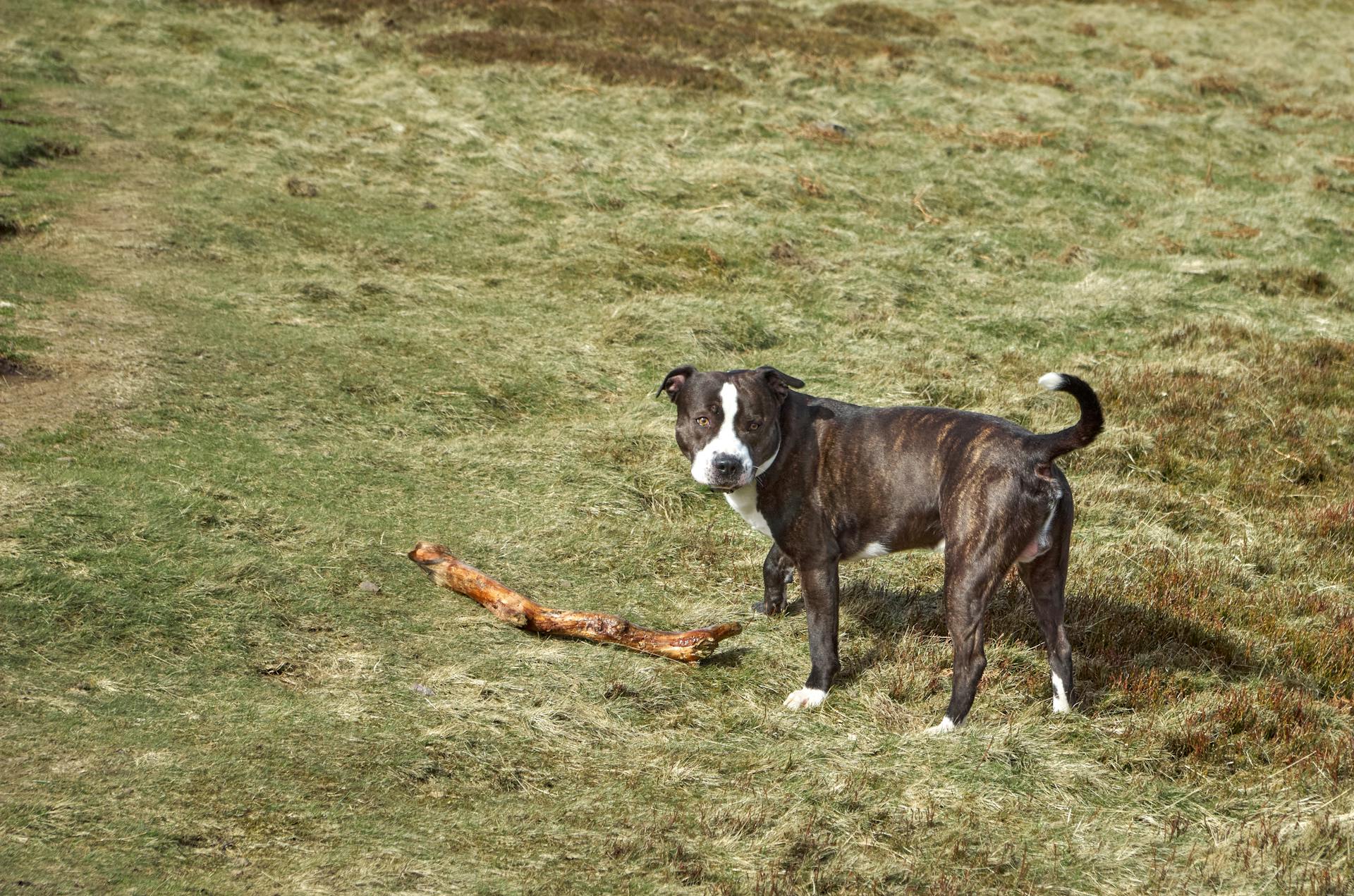
Here are the common symptoms of colour dilution alopecia:
- Hair thinning
- Missing clumps or patches of hair
- Flaky skin
- Itchy skin
- Skin infection
- Small bumps on the skin
- Dry or dull hair coat
It's essential to remember that colour dilution alopecia is not contagious or caused by hormonal imbalances, parasites, or other issues, but rather is an inherited condition.
Diagnosis and Treatment
Diagnosis of color dilution alopecia in a Staffordshire Bull Terrier typically involves a full physical examination by a veterinarian to rule out other causes of hair loss such as fleas, Demodex mites, hypothyroidism, and ringworm.
A skin biopsy may be performed to examine the hair follicles and shafts under a microscope, which can show abnormal melanin clumps and damaged hair follicles.
The veterinarian will also look at the hair under a microscope to check for abnormal melanin clumps, which is a key indicator of color dilution alopecia.
Treatment for color dilution alopecia is aimed at controlling secondary skin infections and improving skin and coat health. This can involve medicated shampoos, sprays, and mousses to moisturize the skin and coat, as well as oral therapies such as melatonin, retinoids, and omega-3 fatty acids from fish oils.
Mild shampoos containing sulfur and salicylic acid may also be helpful in reducing follicular plugging. It's essential to avoid harsh, damaging brushes and to tell your groomer about your dog's special needs if you get your dog groomed professionally.
You might enjoy: Liver Color Brittany Spaniel
Vets Diagnose Color Dilution Alopecia
Your veterinarian will first perform a full physical examination to diagnose color dilution alopecia in your dilute-colored puppy. They will look for other issues such as fleas, Demodex mites, hypothyroidism, and ringworm that can also cause hair loss.
Your vet may perform tests to rule out these other issues, and they will also examine the hair under a microscope to check for abnormal melanin clumps. This is a crucial step in the diagnosis process.
A skin biopsy may also be performed to examine the hair follicles and shafts more closely. This can help your vet determine if the hair loss is indeed caused by color dilution alopecia.
Your vet will look for damaged hair follicles, abnormal hair shafts, and clumps of melanin when examining the hair under a microscope. If these signs are present, a diagnosis of color dilution alopecia can be made.
Take a look at this: What Does a Roundworm Look like in a Dog
Treatment
Color dilution alopecia is not curable, but it can be managed to help your dog live a normal, happy life. The goal of treatment is to control secondary skin infections and prevent further hair loss.
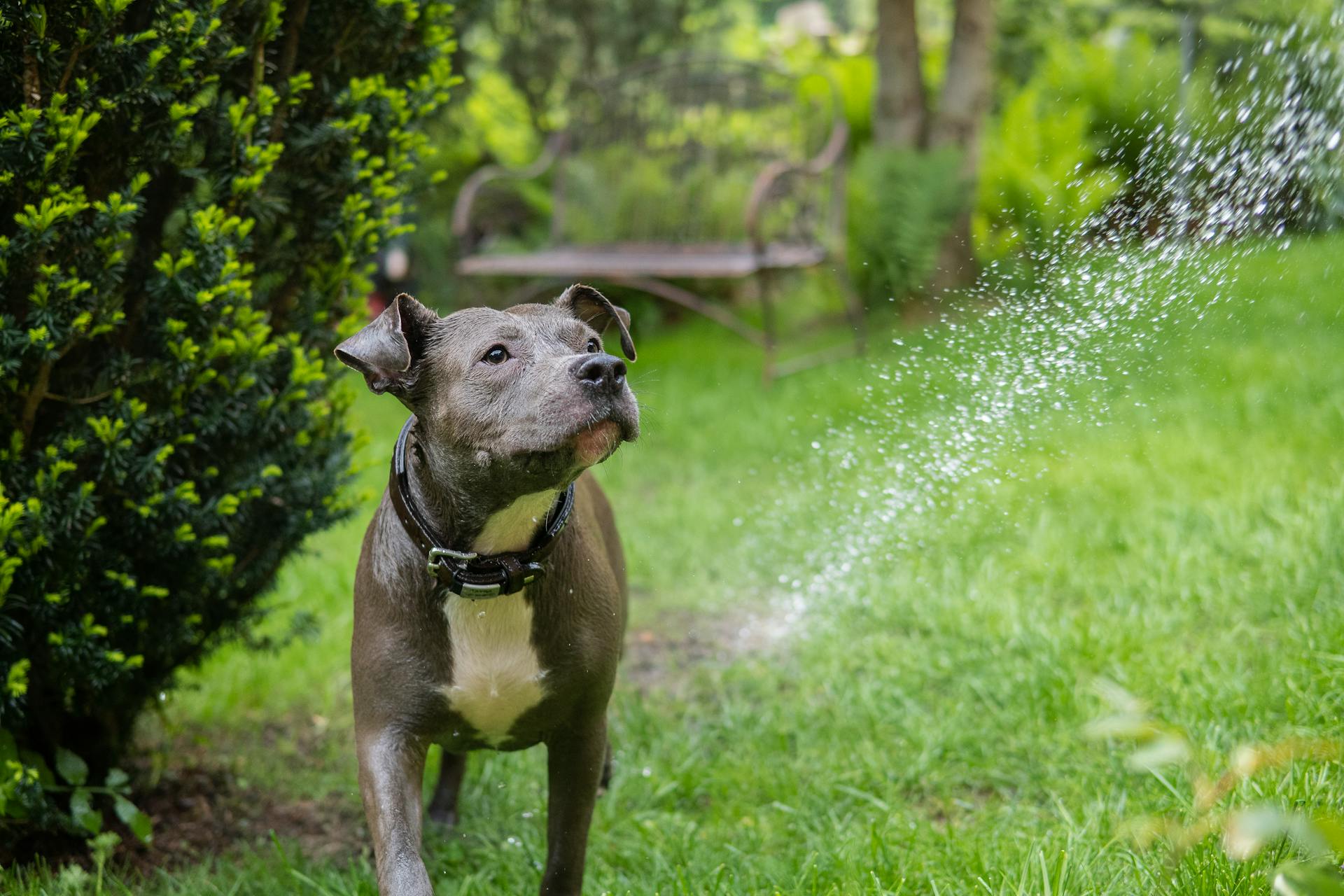
Medicated shampoos, sprays, and mousses can be used to moisturize the skin and coat. Avoid harsh, damaging brushes when grooming your dog, and inform your groomer about their special needs.
Oral therapies like melatonin, retinoids, omega-3 fatty acids from fish oils, and vitamin A may be prescribed by your veterinarian to support skin health. These supplements can help keep the skin and coat conditioned and healthy.
Mild shampoos containing sulfur and salicylic acid may be helpful in reducing follicular plugging. In some dogs, supplementation with oral melatonin or retinoids can stimulate partial hair growth.
It's essential to avoid the sun or use a sun suit to prevent sunburn and reduce the risk of skin cancer.
On a similar theme: Mini Pinscher Food to Avoid
Alopecia in Dogs
Symptoms of color dilution alopecia in dogs are quite distinctive, often starting with patchy hair loss that begins when the dog is still a puppy.
Over time, these patches grow bigger, and the dog may eventually lose all of its fur.
The condition is always inherited, not contagious or caused by hormonal imbalances, parasites, or other issues.
Recessive genes that disrupt melanin distribution in the hair shafts of dogs with dilute coloring are the culprit behind color dilution alopecia.
In dilute-colored dogs, a recessive gene is inherited from each parent, making it a potential issue when breeding two dogs with this gene.
Color dilution alopecia is not curable, but it can be managed to help a dog lead a normal, happy life.
To manage the condition, skin infections may need to be treated with antibiotics and anti-inflammatory medications, but long-term management involves supplements and topical therapies to improve skin and coat health.
Medicated shampoos, sprays, and mousses can be used to moisturize the skin and coat, while avoiding harsh brushes is crucial when grooming dogs with color dilution alopecia.
Oral therapies, including melatonin, retinoids, and omega-3 fatty acids from fish oils, may be prescribed by your veterinarian to keep the skin and coat as healthy as possible.
Discover more: Havanese Color Change
What Causes CDA?
Color dilution alopecia in Staffordshire Bull Terriers is primarily caused by genetic factors. A recessive gene is inherited from each parent, which disrupts the way melanin distributes in the hair shafts of dogs with dilute coloring.
Dogs with dilute coat colors like blue or fawn have this gene, which leads to fragile hair that breaks off at its base. Affected dogs also have overall stunted hair growth.
Recessive genes cause melanin to clump in the hair shafts, making the hair fragile and prone to breaking. This is the root cause of color dilution alopecia in Staffordshire Bull Terriers.
The genetic alteration affects the structure and function of the dog's hair follicles, leading to hair loss and skin problems.
You might like: Bernedoodle Color Change
Frequently Asked Questions
Is there a treatment for color dilution alopecia?
There is no cure for color dilution alopecia, but treatment focuses on managing secondary skin issues and preventing hair damage. Mild shampoos with sulfur and salicylic acid can help alleviate symptoms.
Why is my Staffy getting bald patches?
Bald patches on your Staffy could be caused by Demodex mites, hair follicle inflammation, or underlying health issues such as trauma, infection, or hormonal imbalances
Do Staffordshire Terriers have seasonal alopecia?
Yes, Staffordshire Bull Terriers are prone to seasonal alopecia, a harmless condition that causes patchy hair loss. This condition typically recurs year after year and can take 6-12 months to regrow.
Sources
- https://www.thesprucepets.com/color-dilution-alopecia-in-dogs-4778261
- https://www.greensboroncvet.com/site/friendly-animal-clinic-blog/2023/10/31/color-dilution-alopecia-treatment
- https://www.pets4homes.co.uk/pet-advice/colour-dilution-alopecia-in-dogs.html
- https://animalallergycolorado.com/animal-disease-index/color-dilution-alopecia
- https://www.pets4homes.co.uk/pet-advice/a-positive-account-of-the-staffordshire-bull-terrier.html
Featured Images: pexels.com
